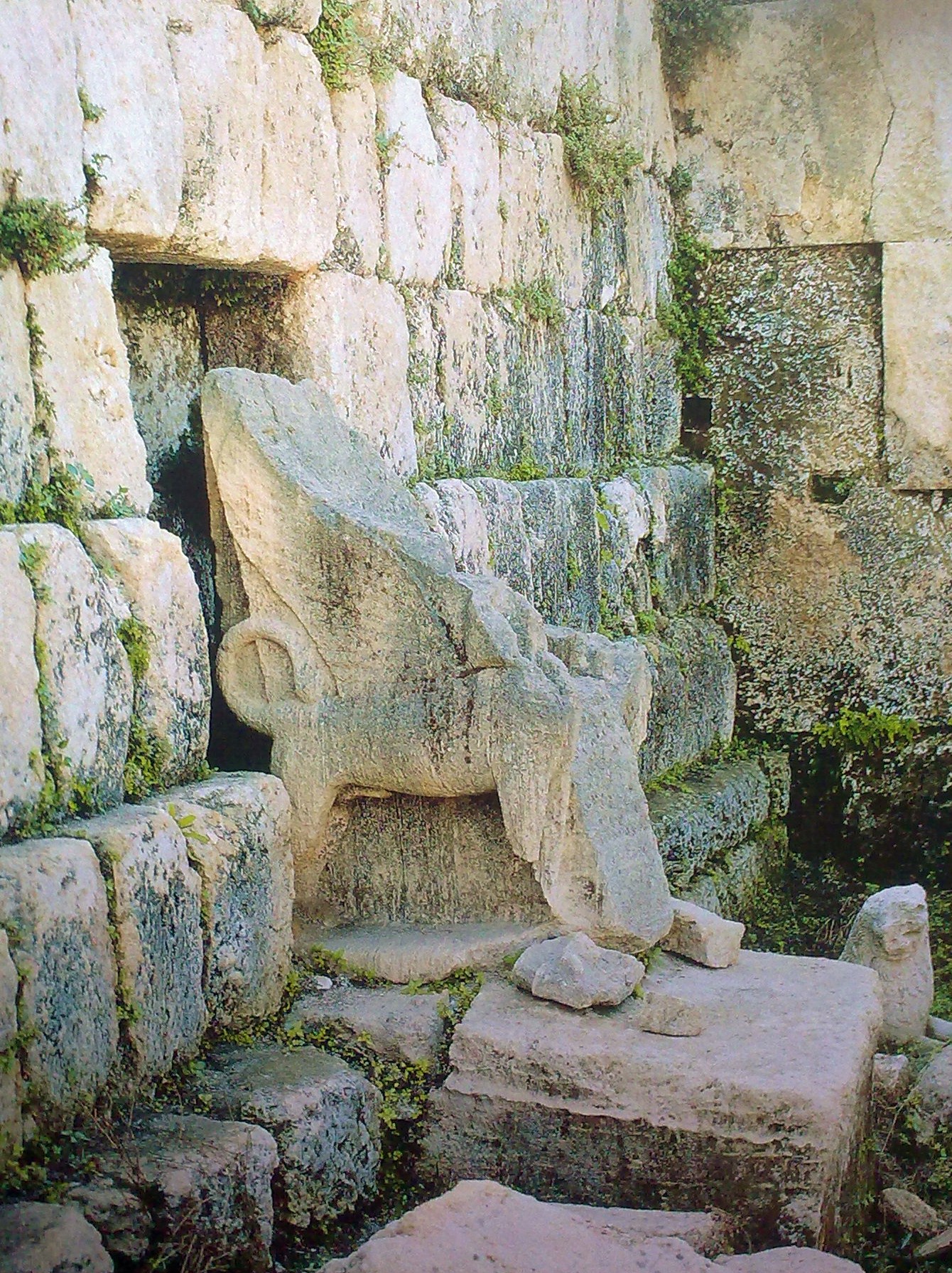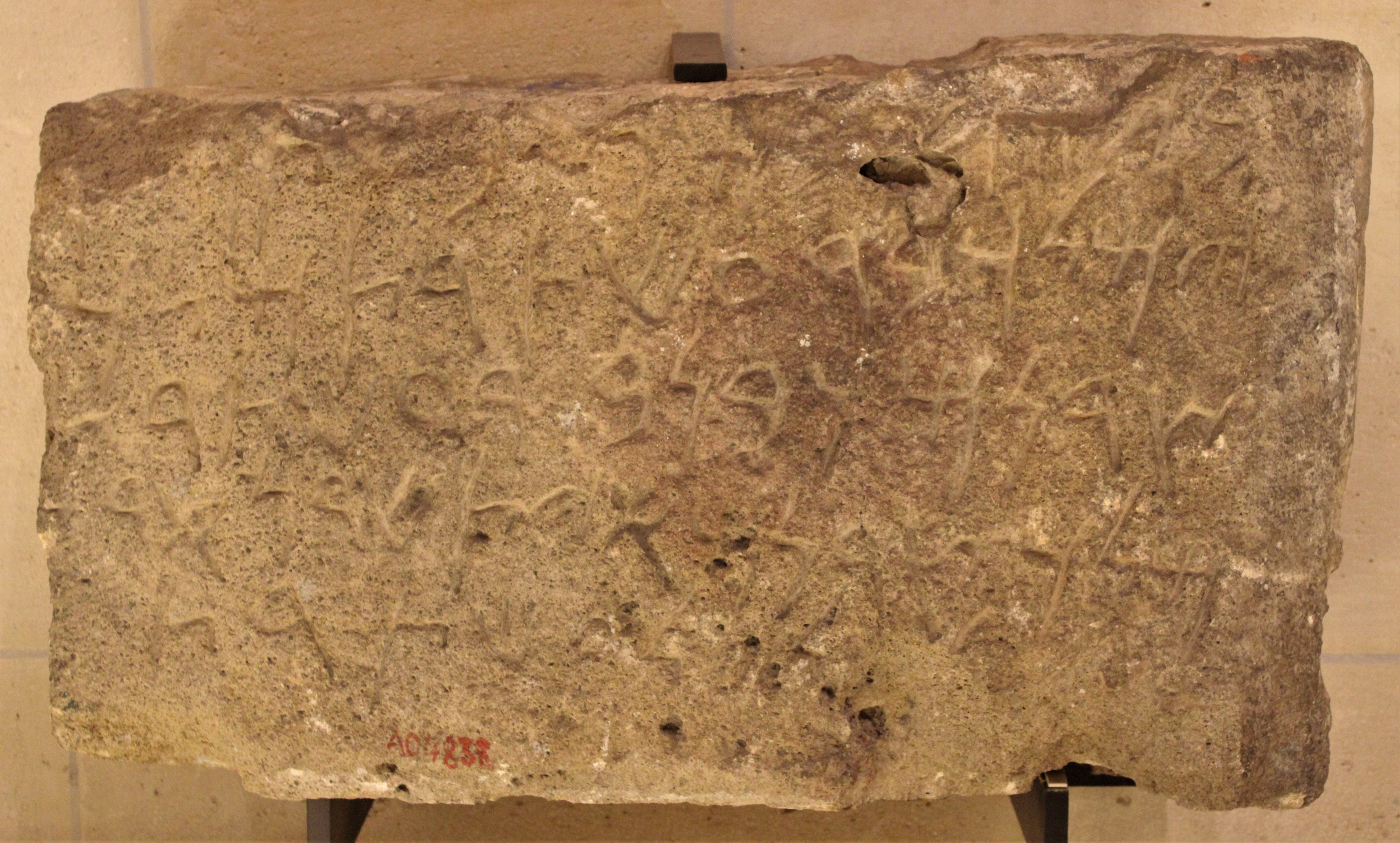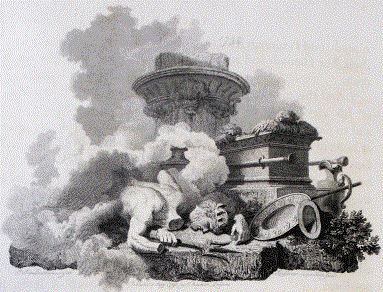|
Amoashtart
Amoashtart (’Am‘aštart, Immi-Ashtart, meaning "my mother is Astarte") was a queen of Sidon in the period ca. 550 - 525 BCE. When ca. 540 her husband and brother, king Tabnit, died, she had an infant son, Eshmunazar II, or, more probably, was pregnant of him. The next fourteen years she was co-regent with her young son, until the boy died, "in his fourteenth year", ca. 525. She then was succeeded by her nephew Bodashtart, possibly in a palace coup. Modern historians have characterized her as an "energetic, responsible oman and endowed with immense political acumen, hoexercised royal functions for many years". The only source for her biography is the sarcophagus of her son Eshmunazar II. Biography Amoashtart became queen ca. 550 BCE as the wife of king Tabnit. This was a period when the economy of Sidon thrived, possibly after the competing city of Tyre had been hit severely by an earthquake (c. 550). Sidon was "reborn as an independent kingdom" and became "the leading Phoe ... [...More Info...] [...Related Items...] OR: [Wikipedia] [Google] [Baidu] |
Amoashtart Name On Eshmunazar II Sarcophagus
Amoashtart (’Am‘aštart, Immi-Ashtart, meaning "my mother is Astarte") was a queen of Sidon in the period ca. 550 - 525 BCE. When ca. 540 her husband and brother, king Tabnit, died, she had an infant son, Eshmunazar II, or, more probably, was pregnant of him. The next fourteen years she was co-regent with her young son, until the boy died, "in his fourteenth year", ca. 525. She then was succeeded by her nephew Bodashtart, possibly in a palace coup. Modern historians have characterized her as an "energetic, responsible oman and endowed with immense political acumen, hoexercised royal functions for many years". The only source for her biography is the sarcophagus of her son Eshmunazar II. Biography Amoashtart became queen ca. 550 BCE as the wife of king Tabnit. This was a period when the economy of Sidon thrived, possibly after the competing city of Tyre had been hit severely by an earthquake (c. 550). Sidon was "reborn as an independent kingdom" and became "the leading Phoe ... [...More Info...] [...Related Items...] OR: [Wikipedia] [Google] [Baidu] |
Eshmunazar II
Eshmunazar II ( Phoenician: 𐤀𐤔𐤌𐤍𐤏𐤆𐤓 ', a theophoric name meaning 'Eshmun helps') was the Phoenician King of Sidon (). He was the grandson of king Eshmunazar I, and a vassal king of the Achaemenid Empire. He reigned after his father Tabnit I on the throne of Sidon. He died at the premature age of 14, and was succeeded by his cousin Bodashtart. The king is known from his sarcophagus, decorated with two inscriptions in the Phoenician script. It is housed in the Louvre Museum. Etymology Eshmunazar is the Latinized form of the Phoenician theophoric name , meaning "Eshmun helps". Variable spellings include: ʾEšmunʿazor, ʾšmnʿzr, Achmounazar, Ashmounazar, Ashmunazar, Ashmunezer, Echmounazar, Echmounazor, Eschmoun-ʿEzer, Eschmunazar, Eshmnʿzr, Eshmunazor, Esmounazar, Esmunasar, Esmunazar, Ešmunʿazor, Ešmunazar, Ešmunazor. Chronology The absolute chronology of the Kings of Sidon from the dynasty of Eshmunazar I has been much discussed in the liter ... [...More Info...] [...Related Items...] OR: [Wikipedia] [Google] [Baidu] |
Bodashtart
Bodashtart (also transliterated Bodʿaštort, meaning "from the hand of Astarte"; ) was a Phoenician ruler, who reigned as King of Sidon ( – ), the grandson of King Eshmunazar I, and a vassal of the Achaemenid Empire. He succeeded his cousin Eshmunazar II to the throne of Sidon, and scholars believe that he was succeeded by his son and proclaimed heir Yatonmilk. Bodashtart was a prolific builder, and his name is attested on some 30 eponymous inscriptions found at the Temple of Eshmun and elsewhere in the hinterland of the city of Sidon in Lebanon. The earliest discovered of Bodashtart's inscriptions was excavated in Sidon in 1858 and was donated to the Louvre. This inscription dates back to the first year of Bodashtart's accession to the throne of Sidon and commemorates the building of a temple to the goddess Astarte. The Temple of Eshmun podium inscriptions were discovered between 1900 and 1922 and are classified into two groups. The inscriptions of the first group, ... [...More Info...] [...Related Items...] OR: [Wikipedia] [Google] [Baidu] |
Eshmunazar II Sarcophagus
The Eshmunazar II sarcophagus is a 6th-century BC sarcophagus unearthed in 1855 in the "Phoenician Necropolis", a hypogeum (underground tomb) complex in the southern area of the city of Sidon in modern-day Lebanon. The sarcophagus was discovered by members of the French consulate in Sidon and was donated to the Louvre. The Eshmunazar II sarcophagus has two sets of Canaanite and Aramaic inscriptions, Phoenician inscriptions, one on its lid and the other on its trough, under the sarcophagus head. The lid engraving was of great significance upon its discovery; it was the first Phoenician language inscription to be discovered in Phoenicia, Phoenicia proper, the most detailed Phoenician text ever found anywhere up to that point, and is today the second longest extant Phoenician inscription after the one discovered at Karatepe bilingual, Karatepe. Eshmunazar II (Phoenician: ', a theophoric name meaning 'Eshmun helps') was a Phoenician King of Sidon and the son of King Tabnit. His sa ... [...More Info...] [...Related Items...] OR: [Wikipedia] [Google] [Baidu] |
Bodashtart Inscriptions
The Bodashtart inscriptions are a well-known group of between 22–24 Phoenician inscriptions from the 6th century BC referring to King Bodashtart.Bordreuil, 1990, "L'exemple le plus impressionnant est certainement celui des nombreuses dedicaces de Bodachtart decouvertes dans le temple d'Echmoun pres de Saida et conservees aujourd'hui dans plusieurs musees, auxquelles s'ajoutent trois exemplaires demeures in situ... Le nombre des inscriptions de Bodachtart mises au jour et repertories est a ce jour d'au moins dix-neuf (KAI 15 + 16) dont neuf (KAI 16) mentionnent Yatonmilk patronyme de Bodachtart. Il faut y ajouter RES 767 K in situ et les trois mentionnes par G. Contenau, soit quatre, a moins que RES 767 K ne soit la premiere mentionnee par G. Contenau, ce qui reduirait le supplement a trois. De plus on ne sait si l'estampage de RES 289 C correspond a un exemplaire connu par ailleurs ou s'il est le seul temoignage d'un exemplaire aujourd'hui disparu. A ma connaissance le nombre d'ins ... [...More Info...] [...Related Items...] OR: [Wikipedia] [Google] [Baidu] |
Kings Of Sidon
The King of Sidon was the ruler of Sidon, an ancient Phoenician city in what is now Lebanon. Scholars have pieced together the fragmented list from various archaeological finds since the 19th century. Egyptian period * c.1700s BC Zimrida * c. 1300s BC Zimredda of Sidon / Zimrida IISidon : a study in oriental history 1907, Appendix 1: Kings of Sidon, p. 155-156. * c. 1300s BC Iab-nilud Assyrian period * 680–677 BCPersian period Eshmunazar Dynasty * 575–550 BC |
6th-century BC Rulers In Asia
The 6th century is the period from 501 through 600 in line with the Julian calendar. In the West, the century marks the end of Classical Antiquity and the beginning of the Middle Ages. The collapse of the Western Roman Empire late in the previous century left Europe fractured into many small Germanic kingdoms competing fiercely for land and wealth. From the upheaval the Franks rose to prominence and carved out a sizeable domain covering much of modern France and Germany. Meanwhile, the surviving Eastern Roman Empire began to expand under Emperor Justinian, who recaptured North Africa from the Vandals and attempted fully to recover Italy as well, in the hope of reinstating Roman control over the lands once ruled by the Western Roman Empire. In its second Golden Age, the Sassanid Empire reached the peak of its power under Khosrau I in the 6th century.Roberts, J: "History of the World.". Penguin, 1994. The classical Gupta Empire of Northern India, largely overrun by the Huna, ended i ... [...More Info...] [...Related Items...] OR: [Wikipedia] [Google] [Baidu] |
Tabnit Sarcophagus
The Tabnit sarcophagus is the sarcophagus of the Phoenician King of Sidon Tabnit I (ruled c. 549–539 BC), the father of King Eshmunazar II. The sarcophagus is decorated with two separate and unrelated inscriptions – one in Egyptian hieroglyphics and one in Phoenician script. The latter contains a curse for those who open the tomb, promising impotency and loss of an afterlife. It was created in the early 5th century BC, and was unearthed in 1887 by Osman Hamdi Bey at the Ayaa Necropolis east of Sidon together with the Alexander Sarcophagus and other related sarcophagi. Tabnit's body was found floating perfectly preserved in the original embalming fluid. Both the sarcophagus and Tabnit's decomposed skeleton are now in the Istanbul Archaeology Museums. The sarcophagus, together with the Eshmunazar II sarcophagus, were possibly acquired by the Sidonians following their participation in the Battle of Pelusium (525 BC), and served as models for later Phoenician sarcophagi. The Phoen ... [...More Info...] [...Related Items...] OR: [Wikipedia] [Google] [Baidu] |
Achaemenid Empire
The Achaemenid Empire or Achaemenian Empire (; peo, 𐎧𐏁𐏂, , ), also called the First Persian Empire, was an ancient Iranian empire founded by Cyrus the Great in 550 BC. Based in Western Asia, it was contemporarily the largest empire in history, spanning a total of from the Balkans and Egypt in the west to Central Asia and the Indus Valley in the east. Around the 7th century BC, the region of Persis in the southwestern portion of the Iranian plateau was settled by the Persians. From Persis, Cyrus rose and defeated the Median Empire as well as Lydia and the Neo-Babylonian Empire, marking the formal establishment of a new imperial polity under the Achaemenid dynasty. In the modern era, the Achaemenid Empire has been recognized for its imposition of a successful model of centralized, bureaucratic administration; its multicultural policy; building complex infrastructure, such as road systems and an organized postal system; the use of official languages across ... [...More Info...] [...Related Items...] OR: [Wikipedia] [Google] [Baidu] |
Dagon
Dagon ( he, דָּגוֹן, ''Dāgōn'') or Dagan ( sux, 2= dda-gan, ; phn, 𐤃𐤂𐤍, Dāgān) was a god worshipped in ancient Syria across the middle of the Euphrates, with primary temples located in Tuttul and Terqa, though many attestations of his cult come from cities such as Mari and Emar as well. In settlements situated in the upper Euphrates area he was regarded as the "father of gods" similar to Mesopotamian Enlil or Hurrian Kumarbi, as well as a lord of the land, a god of prosperity, and a source of royal legitimacy. A large number of theophoric names, both masculine and feminine, attests that he was a popular deity. He was also worshiped further east, in Mesopotamia, where many rulers regarded him as the god capable of granting them kingship over the western areas. Attestations of Dagan from coastal areas are much less frequent and come mostly from the northern city of Ugarit, where Dagan's cult had a limited scope. According to the Hebrew Bible, Dagan was als ... [...More Info...] [...Related Items...] OR: [Wikipedia] [Google] [Baidu] |
Jaffa
Jaffa, in Hebrew Yafo ( he, יָפוֹ, ) and in Arabic Yafa ( ar, يَافَا) and also called Japho or Joppa, the southern and oldest part of Tel Aviv-Yafo, is an ancient port city in Israel. Jaffa is known for its association with the biblical stories of Jonah, Solomon and Saint Peter as well as the mythological story of Andromeda and Perseus, and later for its oranges. Today, Jaffa is one of Israel's mixed cities, with approximately 37% of the city being Arab. Etymology The town was mentioned in Egyptian sources and the Amarna letters as ''Yapu''. Mythology says that it is named for Yafet (Japheth), one of the sons of Noah, the one who built it after the Flood. The Hellenist tradition links the name to ''Iopeia'', or Cassiopeia, mother of Andromeda. An outcropping of rocks near the harbor is reputed to have been the place where Andromeda was rescued by Perseus. Pliny the Elder associated the name with Iopa, daughter of Aeolus, god of the wind. The medieval Ara ... [...More Info...] [...Related Items...] OR: [Wikipedia] [Google] [Baidu] |
Eshmun
Eshmun (or Eshmoun, less accurately Esmun or Esmoun; phn, 𐤀𐤔𐤌𐤍 '; akk, 𒅀𒋢𒈬𒉡 ''Yasumunu'') was a Phoenician god of healing and the tutelary god of Sidon. History This god was known at least from the Iron Age period at Sidon and was worshipped also in Tyre, Beirut, Cyprus, Sardinia, and in Carthage where the site of Eshmun's temple is now occupied by the acropolium of Carthage. According to Eusebius of Caesarea, Phoenician author Sanchuniathon wrote that Sydyk, 'The Righteous', first fathered seven sons equated with the Greek Cabeiri or Dioscuri, no mother named, and then afterwards fathered an eighth son by one of the seven Titanides or Artemides. (See Kotharat). The name ''Eshmun'' appears to mean 'the Eighth'. The Neo-Platonist Damascius also stated Photius (''Bibliotheca'' Codex 242) summarizes Damascius as saying further that Asclepius of Beirut was a youth who was fond of hunting. He was seen by the goddess Astronoë (thought by many scholars to ... [...More Info...] [...Related Items...] OR: [Wikipedia] [Google] [Baidu] |









